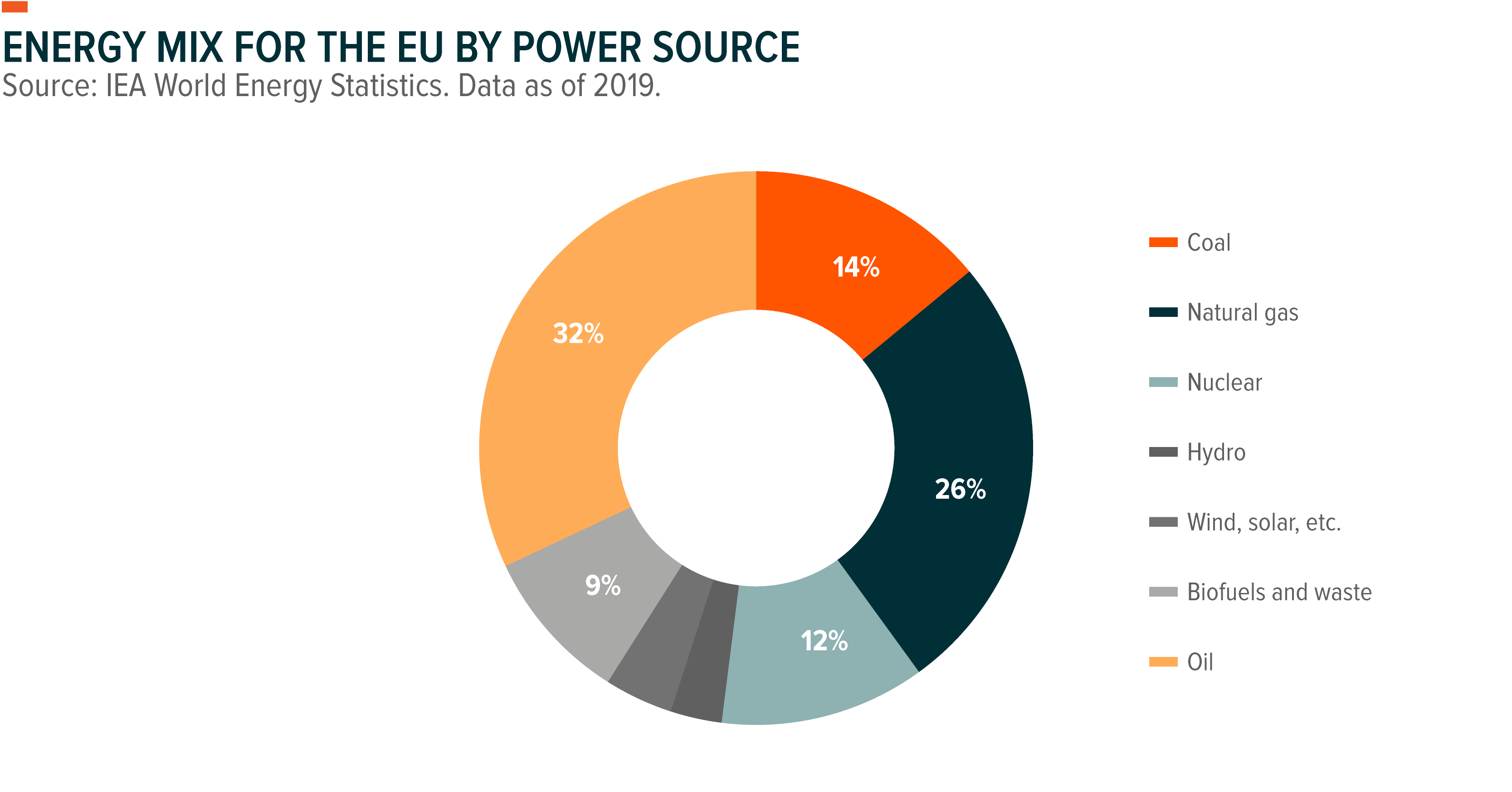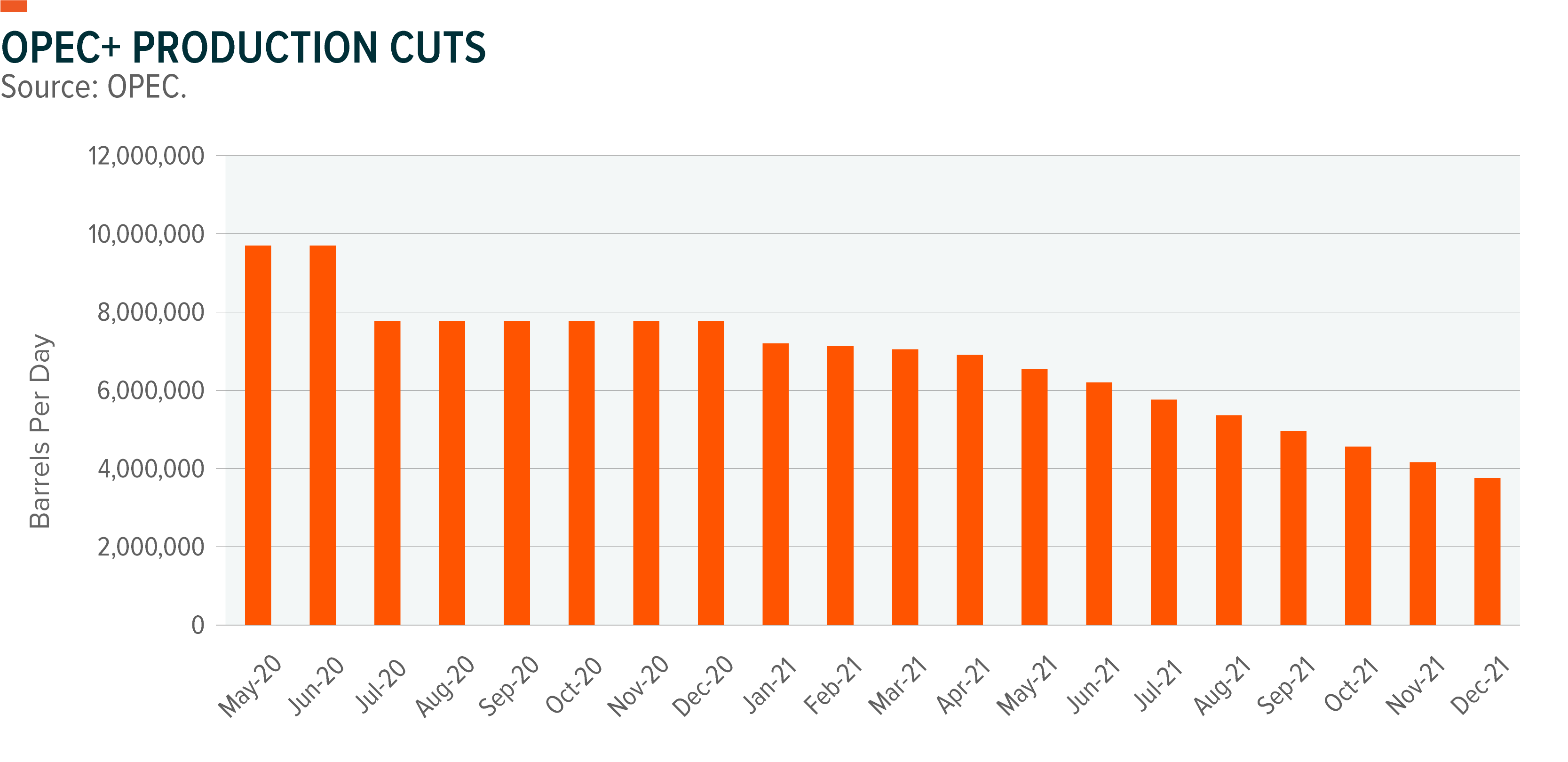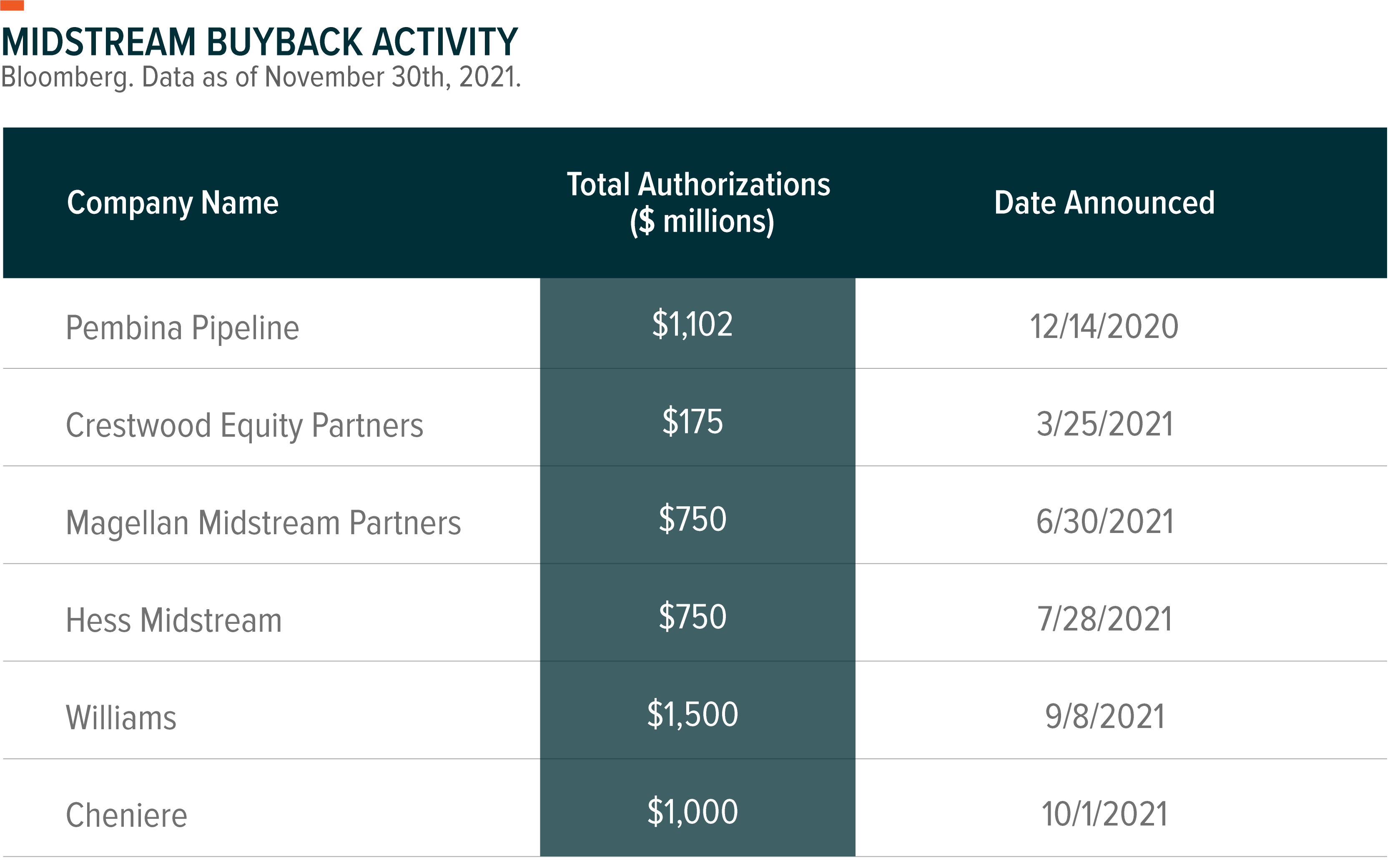A link to the latest Global X MLP Monthly Report can be found here.
The recent rally in energy prices has improved investor sentiment for midstream assets, even though US oil production remains well below pre-pandemic levels. We believe higher-for-longer oil and natural gas prices could force exploration and production (E&P) companies to drill more and ratchet up production, resulting in greater volumes for MLPs. In the meantime, higher commodity prices have led to aggressive buyback and M&A activity throughout the space. Further down the road, we anticipate that the master limited partnership (MLP) structure could enjoy an overhaul that potentially includes clean energy assets, which could set the segment up for revitalized growth.
Key Takeaways
- Natural gas is expected to be a major growth driver for the midstream sector in 2022, and the current supply shortfall makes the need for pipeline infrastructure all the more critical.
- We believe the market is discounting US energy production growth given tepid production hikes during the pandemic. However, US energy production is expected to increase in 2022, led by natural gas.
- Energy assets like midstream are more attractive than other sectors in an inflationary environment because of their ability to pass through rising costs to customers.
A Perfect Storm for Energy Prices: Lower Supply and Rising Demand
Economies ramping back up and changing weather patterns that brought colder weather increased demand for natural gas in 2021. Gas prices began the year at $3 British thermal units (Bin the US, but then shot up to more than $5 and then above $6 in the late summer and early fall. Prices could keep rising through the winter, particularly with natural gas infrastructure already operating at more than 75% of full capacity, which is another factor in the price run-up.1 The energy crisis in Europe can be traced to its reliance on Russian gas supply and lower-than-expected wind power output putting additional strain on its oil and gas supplies. Natural gas represents over a quarter of the EU’s energy supply, so the disruption in Russian supply exacerbated an already challenged supply chain.

Higher oil prices are the result of improving global demand and inflationary pressures. West Texas Intermediate (WTI) hit $80 in early October, nearly double its price in October 2020. Factors contributing to the increase in 2021 were China’s progress in its economic re-opening in the few months prior and increased global mobility with higher vaccination rates and travel restrictions lifted. We believe that the resiliency of oil prices through multiple COVID waves, including the most recent delta and omicron variants, suggest that these types of setbacks aren’t enough to derail the trajectory of medium-term oil demand. Emerging market (EM) demand is still forecasted to be a key source of oil and gas demand relative to developed economies. Rising international trade, resumptions in tourism, and manufacturing activity should serve to drive EM energy demand. Demand is on an upward trajectory, but the key is whether supply can keep pace.

Oil Supply Hasn’t Increased Enough to Lower Prices
Higher oil prices aren’t just a demand story. Supply levels from major producers still haven’t returned to pre-pandemic levels for several reasons. OPEC+ is increasing its production quotas slowly. Fears about lingering COVID-19 effects in the winter months may be factoring into the cartel’s decision to not be more aggressive.

Another reason is the ongoing nuclear negotiations between Iran and the West. If negotiations turn positive and sanctions on Iranian oil production are lifted, another million barrels per day or more could be reintroduced into the market. Iran claims they can produce up to 6.5 million bpd, yet their peak prior to the sanctions was around 3.8 million bpd. Regardless, higher Iranian oil production would throw a wrench in OPEC’s gradual supply strategy given that the country is exempt from OPEC’s current production quotas. Considering OPEC+ is currently tapering production at a rate of 400,000 bpd, increased production from Iran and/or OPEC+ could drive prices lower. But it’s important to note the fluid nature of the negotiations and that this scenario appears unlikely at the moment.
US producers haven’t been rushing to increase production yet either. Part of their strategy likely speaks to the market’s current preference for more efficient use of capital relative to the macro environment in recent years and capital markets being relatively expensive. How much longer US producers keep production levels tapered is a big question. Oil production was at just 11.5 million barrels per day at the end of October, well below the peak of 13 million barrels per day in March 2020. Production has been fairly rangebound for most of the pandemic.
Two scenarios could cause US production to rise meaningfully, in our view. First, if investors start rewarding companies for higher production, as was the case prior to the 2014 boom, capital allocation policies could shift to increase capital expenditure (CapEx). Also, higher rig utilization, typically a pre-cursor to rising production could follow. Second, if oil prices remain above $80 for a sustained period, producers may not want to sit out the rally, as most projects become economical at those price levels. When a project is well above its breakeven price, there is little incentive to not utilize the field and raise production. Even more expensive projects like offshore drilling become economical at $80 price levels. However, these scenarios are longer-term possibilities, and they’re unlikely to make a dent in supply heading into 2022.

Improving Fundamentals Propelled Midstream in 2021
Bottom-line growth is responsible for midstream’s strong performance this year. The economic reopening benefitted oil prices and gave Exploration & Production (E&Ps) more confidence to resume operations and, in some cases, increase production. The rise in natural gas prices and the resulting escalation in US gas production only added to that confidence. This chart shows the steady upward trajectory of free cash flow yield for midstream equities since February 2020.

Growth in midstream businesses this year was primarily a result of rising energy production after the pandemic-induced decline, but valuations are still playing catch up. The asset class is still inexpensive historically despite the rally this year.

A major factor in current valuation levels is US oil production hovering in the 11.5–12 mbpd range, which is still below pre-pandemic levels. But we believe the market is discounting future production growth expectations. Higher energy production is a key facet of the midstream transport-oriented business model. Midstream contracts are primarily fee-based models that generate revenue by the volumes being transported in their pipelines. Natural gas production is expected to grow to record levels in 2022, and historically, midstream earnings benefit from higher production trends.

M&A and Buybacks Heating Up Due to Expected Economic Recovery
M&A is now a focus for the industry as it considers long-term scalability, evidenced by three major MLP transactions just in the second half of the year. Phillips 66 Partners (PSXP) and BP Midstream Partners (BPMP) announced roll-up transactions where they will be absorbed into their sponsors. Also, Crestwood Equity Partners (CEQP) announced that it would acquire Oasis Midstream Partners (OMP) in a $1.8 billion deal. We believe that this M&A activity illustrates greater acquirer confidence in executing deals at this scale, compared to prior years when the energy sector was on shakier footing.
Buyback activity also picked up, a signal that management teams still view the midstream segment as undervalued, even after 2021’s gains. Historically, midstream companies didn’t consider buybacks in their business models because most of the capital returned to shareholders was through dividends and distributions, and shareholders didn’t clamor for that type of capital return. However, lower valuations in recent years changed the calculus, and investors reacted positively to buybacks because they’re considered a stronger signal that shares may be underpriced. Buyback activity increased slowly in late 2020 with valuations depressed across midstream assets. But in the second half of 2021, buybacks initiated by large midstream companies in particular were bigger and more aggressive.

Outlook: Midstream Equities Appear Well-Positioned for the Short and Long Term
Fundamentals, the macroeconomic environment, and legislative tailwinds make the outlook for the midstream sector bright, in our view. The uptick in global energy prices along with a rise in US oil and gas production could make the transport-oriented midstream industry more attractive than other energy segments. Global economies reopening potentially increases the likelihood of risk-on sentiment prevailing. And inklings of longer-term legislative developments, such as expanding the MLP structure to include renewable energy assets, could create growth opportunities beyond 2022. For example, a development like this could entice clean energy companies to explore use of the MLP structure, and entice MLPs and energy infrastructure companies to diversify into renewable energy.
Related ETFs
MLPA: The Global X MLP ETF invests in some of the largest, most liquid midstream Master Limited Partnerships (MLPs).
MLPX: The Global X MLP & Energy Infrastructure ETF is a tax-efficient vehicle for gaining access to MLPs and similar entities, such as the General Partners of MLPs and energy infrastructure corporations.
Please click the fund names above for current fund holdings and important performance information. Holdings are subject to change.
 Rohan Reddy
Rohan Reddy